Summer is here… heatwaves are incoming, and with them, the much-announced and expected Ukrainian new wonder weapon — his “majesty,” the F-16.
I have already written an analysis of this aircraft, and nothing is unknown.
The first question regarding the F-16's role in Ukraine is where they will be located. Several well-equipped airfields potentially can host them, but they are exposed, and from time to time, Russia attacks them, so chances that any will be a permanent base are unlikely. The F-16 is a demanding aircraft and requires well-trained and supplied maintenance crews and logistics. Also, it requires pristine runways, which are not always available. So, they may be placed in Allied bases, such as Poland and Romania. From there, they can perform combat sorties, which is the sure path to escalation and is just a “hair” away from WWIII.
Let's assume a dozen get to Ukraine and be sheltered in some hardened structures.
Flight distance to the front line is large, so they might be used as standoff weapons carriers. Direct close-range attacks against Russian positions are too risky, so one of the roles may be to provoke, expose, and clear the path for ATCMS attacks. They may be used to launch long-range decoy drones to trigger and saturate air defenses. Western strategists have high expectations that the F-16 will seriously degrade and overcome the up-to-now outstanding Russian integrated air defenses.
The F-16 is by all means a very capable platform and, in previous conflicts, proved itself formidable against obsolete air defenses. In many US and NATO aggressions, it was the workhorse but also suffered casualties. For example, during the NATO aggression on Yugoslavia, it was a mainstream of the allied air forces. In this aggression, the US F-16s were equipped with towed decoys, but even with (then) very sophisticated decoys, one was downed, and there are indications that several were damaged.
Towed decoys can thwart a missile attack during the last guidance phase. These decoys are towed by a fighter or bomber airplane on a cable whose length can vary. The decoy can be stowed inside the aircraft in a special compartment. A towed decoy is equipped with amplifying repeaters and passive reflectors that increase the size of its radar cross section (RCS) to that of the carrier airplane. Their effectiveness is high if, at the initial moment of missile (or fighter) guidance, the protected airplane and the decoy are represented as a single target (i.e., they are not resolved into angles, ranges, and Doppler frequencies). The use of towed decoys has several specific requirements. The distance of the towed decoy from the airplane is determined by the angle and velocity resolution of the system being jammed.
The AN/ALE-50 towed decoy system was developed by Raytheon to protect multiple US military aircraft from radar-guided missiles. The ALE-50 consists of a launch controller, launcher, and towed decoy. It can be used on a variety of platforms without modification. The ALE-50’s expendable aerial decoy is towed behind the aircraft when deployed. The decoy protects the host aircraft, providing a more attractive target, and steers the radar-guided missile away from the aircraft and right to the decoy.
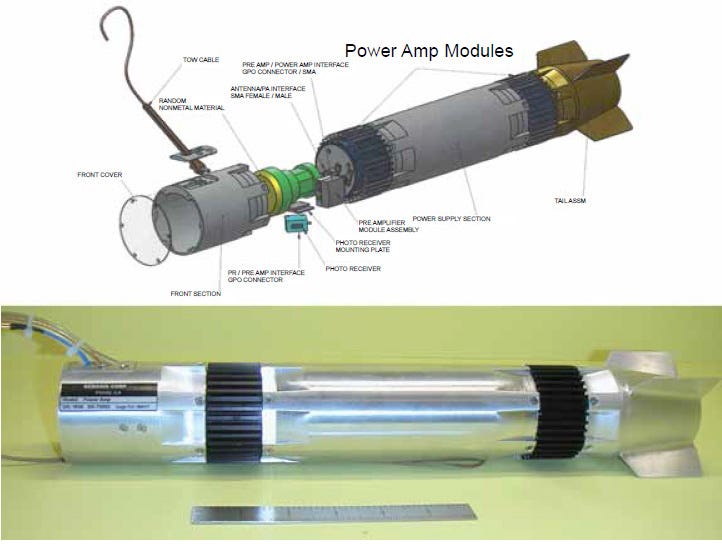
Towed decoys are helpful against opponents with inferior AD, but their value has dropped to zero in Ukraine. Thus, new fire-and-forget decoys were developed.
Decoy drones
Decoy drones are nothing new, and Russia is also using them in large numbers. On the Ukrainian side, the allies’ help and support for Ukraine has resulted in modification of the Soviet-era airplanes that are still operational in Ukraine, such as MiG-29, Su-24, and Su-27, for the use of AGM-88 HARM, Su-24 for Storm Shadow/SCALP and now modifications are ongoing for the use of the latest ADM-160 decoys. Modifications are not technically hard but require time. Once the F-16 is in Ukraine (or maybe Romania or Poland), the DM-160 will be on its “natural” launching platform.
A few years ago, the US Navy awarded Raytheon a $35 million contract to upgrade the existing low-observable EW drone ADM-160 at a cost of about $120,000 per unit.
The basic idea was that these projectiles could be used as decoys to distract the enemy's air defense, force him to use up ammunition, and change the launchers' positions, weakening the air defense even before the strike group's approach. Such decoys have a good range of 925 km and a loitering time over the area of operations from 40 to 70 minutes, depending on the flying profile and velocity.
They can rise to an altitude of up to 12 km and have a maximum speed of 0.9 Mach. Using these decoys in the first attack wave attracts the AD, creates interference, and exhausts designated area missile defense capabilities. The key is to deceive enemy AD operators into believing the decoys are real planes. To achieve this, decoys must produce a very similar radar signature to the real aircraft.
The technology behind this decoy is not new: the prototype was developed about 17 years ago but didn't go into serial production. However, the development didn't stop at the first prototype; it evolved with the range increasing from 450 km to 925 km and with the addition of the EW components.
The latest version, the AD-1M60B MALD-J decoy (all modifications), is an aircraft-launched cruise missile. It differs from the typical strike missile because there is no warhead. Instead of the warhead, it utilizes a unique payload - active or passive electronic components, depending on modification and design. This equipment is built in a 2.85-meter-long fuselage with a square cross-section. It has folding wings with a span of 1.7 meters, the starting weight is about 110 kg, and the jamming module is installed in the cone. Behind it is the hardware compartment, fuel tanks, and other functional equipment. It is equipped with a TJ-150 Hamilton Sundstrand turbojet power pack and can reach a speed of 0.9 Mach and fly at a cruising speed of 0.6 Mach.
The performance characteristics are not bad, and it gave the Americans a reason to arrogantly declare that an effective form of protecting NATO aviation from Russian air defense systems has allegedly been found - by “massively launching similar drones...”. In December 2019, the RAND Corporation released a report entitled “Overextending and Unbalancing Russia,” which provided brief information about the measures intended to contain Russian AD. In particular, in the “Ground and multi-modem operations” section there was an item dedicated to “drone swarms”.
According to some "undisclosed" sources at the Pentagon, the US Navy & Air Force received more than 2,000 decoys of this type through several multimillion-dollar contracts with Raytheon. RAND evaluated these decoy drones as a highly effective means of overcoming the A2/AD1 (Anti-Access/Area-Denial) zone created by the Russian layered air defense system. What Raytheon mainly meant was the S-400 and S-300 systems.
Capabilities
The first thing among several that this decoy can do is to simulate an effective reflective surface (ERS) or radar cross section (RCS) of most types of subsonic air attack weapons, as well as tactical and strategic aviation (from the stealthy LRASM anti-ship missile to the F-22A fighter and the B-1B strategic missile-carrying bomber). This is achieved by integrating into the “bait” - a high-energy multi-band radio-emitting module built around a programmable device based on a Luneberg lens. This device can vary the image intensifier parameters from 0.01–0.02 sq. m to several dozen sq. m.
The second capability partially imitates the frequency parameters of the radiation of on-board radar systems of multi-role fighters of the “4+/++” generations, which are in service with the NATO air forces, the Russian Aerospace Forces, and the Chinese Air Force. The intention is to temporarily confuse operators of enemy electronic reconnaissance systems and pilots relying on information from onboard radiation warning stations. This technique is implemented with an additional antenna module in the radio-electronic “stuffing,” powered by several low-noise gallium nitride microwave transistors coupled with RFT (Radio Frequency Tunable) filters.
The third is modularity: on September 9, 2015, Raytheon and the Naval Research Laboratory announced that they had created a modular, rapid replacement MALD-J architecture for electronic warfare. Four payloads, each customized for a specific mission and threat, were demonstrated in 12 flights. Each can be unloaded from a support vehicle and replaced in the decoy in less than one minute, making it difficult for enemy air defense operators to identify its operation and characteristics.
Other improvements address camouflage techniques. As a result, in July 2016, Raytheon received a contract for the evolution of MALD-J, called MALD-X. This contract includes an improved payload for electronic warfare, the ability to fly at low altitudes, and an enhanced data link with network support.
According to US Air Force doctrinal documents, operations to suppress enemy air defenses (SEAD): “are any military operations that neutralize, destroy, or temporarily suppress its ground-based air defenses using air destruction.” However, numerous studies conducted by Pentagon specialists in studying the layered Russian air defense system and flights of reconnaissance aircraft of the United States and NATO countries have not answered the question: what price will the US Air Force pay when solving this problem? Simulations of SEAD operations conducted by the US Air Force Research Laboratory showed a dismal result: up to 80% losses of attack aircraft and air attack assets on the first day of the operation.
And yet, the use by the enemy of small-sized decoy cruise missiles/drones of the ADM160A MALDJ type, according to military experts, can lead to a complication in the work of ground and airborne AWACS and ELINT of Russia. Moreover, to such an extent that the computing facilities of surveillance radar systems, airborne radars of fighter aircraft, and air defense missile systems will be seriously overloaded, and their operators will be psychologically depressed due to the huge number of air simulators, which will exceed the capacity of any modern radars. This will create enormous difficulties for the calculations of even modern anti-aircraft missile systems. Something that cannot be ignored. After all, the most dangerous thing is mischief, underestimating the enemy.
One needs to know that the new American “deceptions” can only be effective in conjunction with strategic cruise missiles of the Tomahawk type, tactical AGM-158A/B, Storm Shadow & SCALP, and Taurus. These missiles can follow the target, guided only by the GPS module and its INS using thermal imaging-optical correlation sensors.
MALD-J has a compact angular fuselage just over 2 meters long and is suitable to be carried in the B-52's pylons. B-52 can carry 16 of them. Also, compactness allows it to be carried on the underwing pylons of many fighters. For example, the F-16 can carry up to six. Every other NATO aircraft that can carry AIM-120 air-to-air missile can also carry MALD-J. As mentioned, adapters have been developed for ex-Soviet MiGs and Sukhois (like AGM-88 HARM adapters previously).
At the front section is a radio-transparent radome, under which a passive antenna of the ELINT complex and a multi-frequency emitter simulating electromagnetic waves of the millimeter, centimeter, decimeter, and meter ranges with a powerful amplifier are installed. Before modeling a specific frequency and power of the emitter, the decoy missile ELINT receiver's onboard antennas identify and record the irradiating signal parameters, after which the data enters the countermeasure signal-generating device. As a result, target markers appear on the radar indicators of the AD tracking and fire control radar corresponding to the RCS of a decoy aircraft (F-15, F-16, or F22A, for example) pre-selected by the mission planners.
The US continues to supply all kinds of older and advanced systems to Kiev. The rest of NATO follows. These very capable decoys have already been delivered in smaller quantities and applied in some Ukrainian attacks. The first recorded use was on May 12, 2023, during the attack on Lugansk. Ukrainians used Su-24 as a launcher and MiG-29 as an escort. What happened was that the Russian AD detected the attackers and downed them after they launched decoys. These decoys were also destroyed. The wreck was examined at one of the crash sites, and the nameplate with the type and number was found.
The tactical aviation of the Ukrainian Armed Forces in the Kramatorsk and Kurakhovsky operational directions has already begun the combined use of decoys - ADM160B/C (MALD-J). They are used in a technically verified manner - considering their performance characteristics, terrain features, and the formation of Russian anti-aircraft missile brigades. Determination and analysis of the direction to be attacked are carried out using interferometric electronic intelligence sensors placed on ADM160B MALD-J decoys and through electronic intelligence satellites of the US Air Force. Depending on various factors, the flight can occur in a straight line or with maneuvering (loitering) in a given area.
Using ADM160В MALD-J decoys creates additional stress on the Russian AD, and expanding the missiles on them creates opportunities for volleys of HIMARS or ATACMS missiles to attack AD batteries or other highly valuable targets. In any case, without planning and NATO ELINT intelligence support, Ukraine can't do anything. Their role is auxiliary — providing logistics, occasionally acting as crews in mixed units, and pushing the launch buttons. Everything else is a result of meticulous NATO planning. The expected arrival of several times "preowned" F-16s again steers the talks about wonder weapons dozens of times so far.
You probably already know that no one weapon or system will decide the winner in this conflict. The F-16 will likely be targeted upon arrival, and it is a matter of time before the first wrecks are smoldering in fields or wrecked shelters. Some may take off and launch these decoys, but to do anything even remotely important, quantities must be counted in the hundreds.
These decoys will create some headaches for the AD crews, but the overall impact will be like many of the previous "wonder weapons" delivered by the Ukrainian so-called allies. As can be seen, destroying a carrier of these decoys is as crucial as accurately distinguishing the decoy from the real target.
The Russian response will be like a response to any previous much-prized Western weapons: AD crews are experienced, and existing equipment is more than capable of distinguishing the real targets from the decoys. Electronic Warfare units will adjust countermeasures to jam the guidance systems and bring the decoys down. The bases where the carriers might be based will be under constant monitoring and occasional attacks.
[i] Edited by Piquet (EditPiquet@gmail.com)
References
Overextending and Unbalancing Russia, Assessing the Impact of Cost-Imposing Options file:///C:/Users/MihajlovicMi/Downloads/RAND_RB10014.pdf
Three Fingers of Death: Soviet 2K12 KUB (SA-6 Gainful) Missile System
https://web.archive.org/web/20180918193724/http://www.dote.osd.mil/pub/reports/FY2014/pdf/af/2014mald.pdf
Армейский Сборник, Минобороны России, № 7 июль, 2024, ПРИМАНКА ВОЗДУШНОГО БАЗИРОВАНИЯ: Удастся ли дрону MALD-J обмануть российскую систему ПВО.
If you like the article (and many more articles regarding military subjects will come), you can buy me a coffee:
https://www.buymeacoffee.com/mmihajloviW
A2/AD is a military strategy to control access to and within an operating environment. In an early definition, anti-access refers to those actions and capabilities, usually long-range, designed to prevent an opposing force from entering an operational area. Area denial refers to those actions and capabilities, usually of a shorter range, intended to limit an opposing force's freedom of action within the operational area. In short, A2 affects movement to a theater. In contrast, AD affects movement within a theater.A2/AD typically refers to a strategy a weaker opponent uses to defend against an opponent of superior skill. However, a stronger opponent can also use A2/AD.

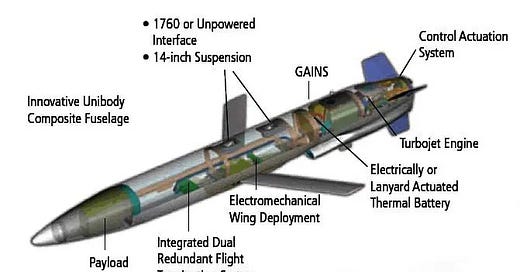


![Ukrainian F-16 Saga [i]](https://substackcdn.com/image/fetch/$s_!H310!,w_140,h_140,c_fill,f_auto,q_auto:good,fl_progressive:steep,g_auto/https%3A%2F%2Fsubstack-post-media.s3.amazonaws.com%2Fpublic%2Fimages%2Fb0efc38a-d245-457a-80e8-709b990d5a8c_1200x650.jpeg)
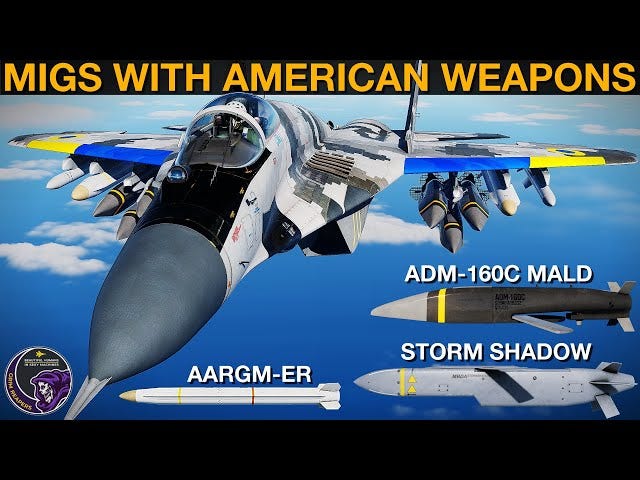
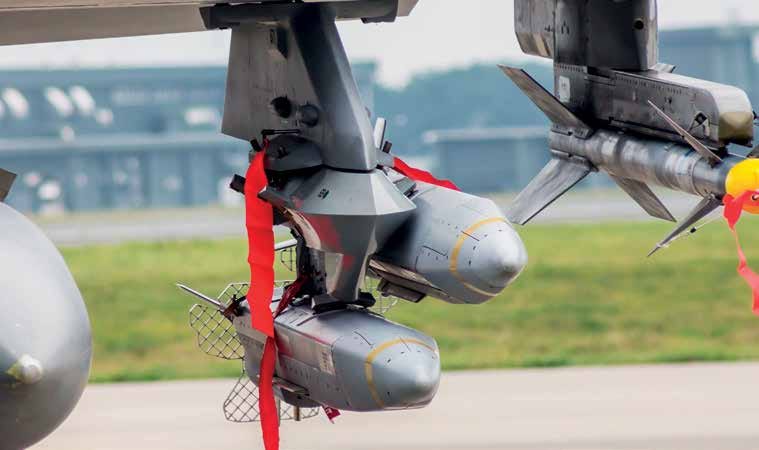


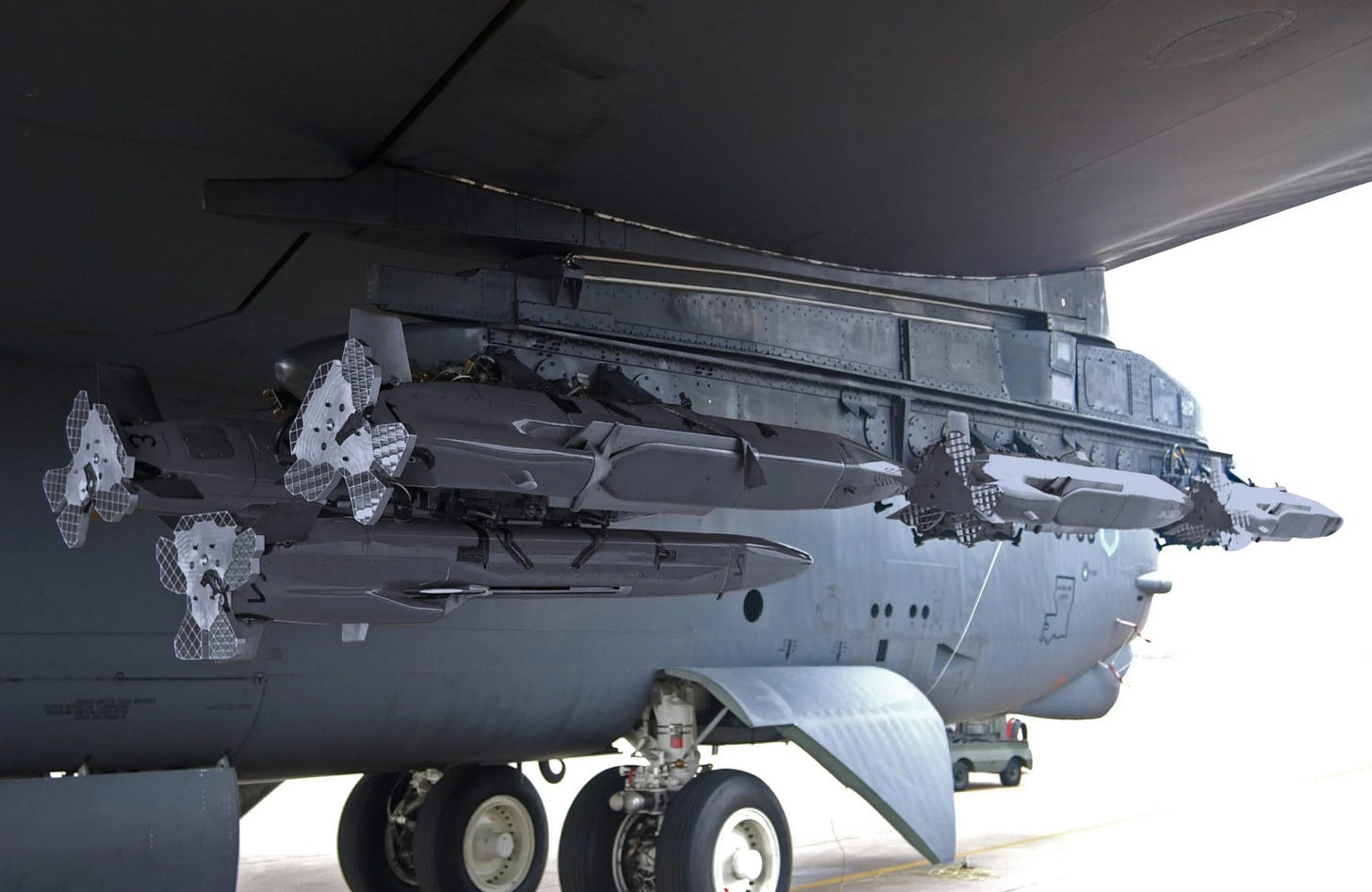

Superb technical yet readable piece. Let's hope the ukronazis get wiped out soon.
weary realistic analisis .
thank you